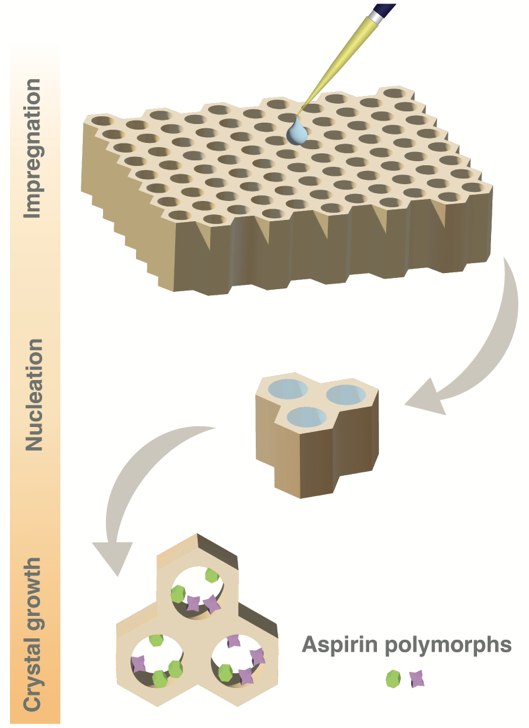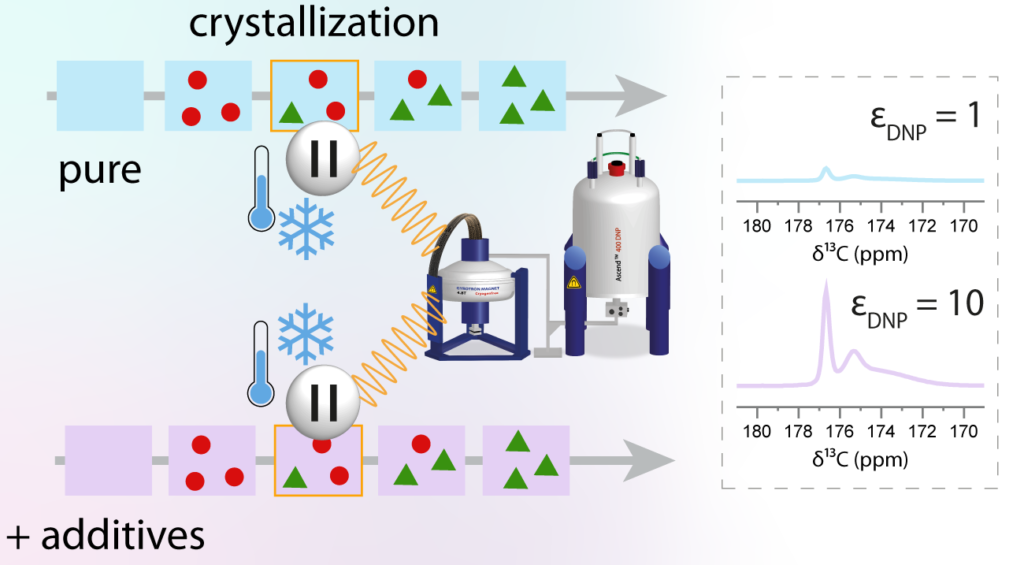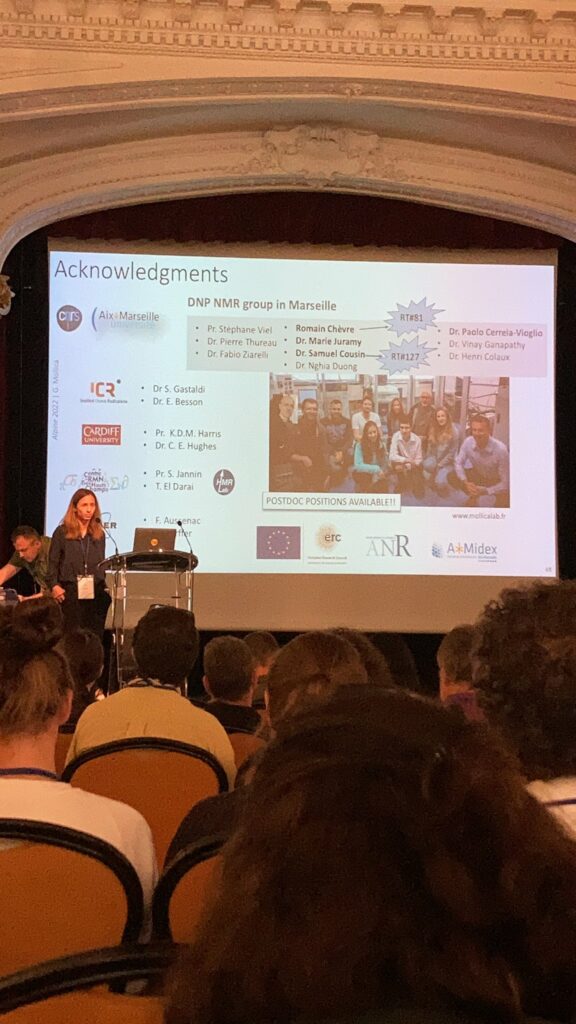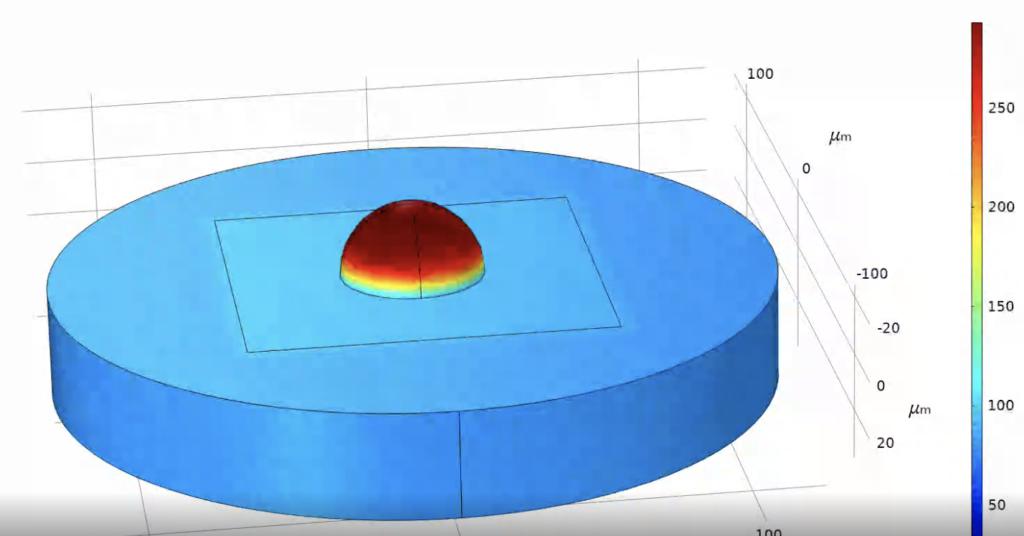New paper from the group

We show that confinement can stabilise metastable polymorphs of Aspirin that can be revealed with the help of solid state NMR.
Exploring the crystallisation of aspirin in a confined porous material using solid-state nuclear magnetic resonance
Marie Juramy, Eric Besson, Stephane Gastaldi, Fabio Ziarelli, Stéphane Viel, Giulia Mollica and Pierre Thureau
Faraday Discussions, accepted (2024)
In this study, nuclear magnetic resonance (NMR) is used to investigate the crystallisation behaviour of aspirin within a mesoporous SBA-15 silica material. The potential of dynamic nuclear polarisation (DNP) experiments is also investigated using specifically designed porous materials that incorporate polarising agents within their walls. The formation of the metastable crystalline form II is observed when crystallisation occurs within the pores of the mesoporous structure. Conversely, bulk crystallisation yields the most stable form, namely form I, of aspirin. Remarkably, the metastable form II remains trapped within the pores of mesoporous SBA-15 silica material even 30 days after impregnation, underscoring its persistent stability within this confined environment.








































